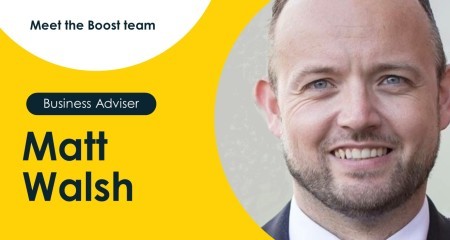
The majority of us didn’t go into business to be an accountant, sit in front of spreadsheets, or punch numbers into an accounting software package and then wonder if there aren’t better things to do on a Friday afternoon.
Some sayings are true, run out of cash, no profit and the business fails. But the problem currently looming is about both cash and profitability. Planning to grow again after surviving the recent months will be a challenge on many fronts. Business failure is a far too common a feature during such periods, as you plan to grow again with a lack of working capital, pressure on gross margins and, in many cases, increased debt.
So what can financial management do to help business successfully manage a way out of the COVID-19 recession? Here's a few words about understanding that just three numbers will support your decision making over the coming months:
Why wouldn’t you know your break even and have it at your fingertips? To misquote Mr Micawber on Dickens’ 150th anniversary: “Annual income £20.99, annual expenditure £20.00, result happiness. Annual income £20.00, annual expenditure £20.99, result misery.”
Or, to put it slightly differently, the break even position is the point at which you neither make a profit or a loss. For management purposes, this is expressed as sales that you can calculate on a monthly, weekly or even a daily basis.
It’s the difference between your actual sales and your break even sales. A business growing profitably would tend to have a margin of safety that was also growing. A business that’s growing in size and sales volume but with declining profitability, (over-trading) would tend to have a diminishing margin of safety. This potentially has adverse implications for adequate cash flow.
The aim should be to increase your margin of safety, the difference between actual and break even sales, by driving down your expenses whilst improving your gross margin. Yes I agree that’s a tricky proposition, but then you’re in business and I’ve never believed it's a walk in the park.
What is important, is understanding your current break even position, and then tracking that number over time. The calculation really is straight forward and brings together your sales, the cost of those sales and your operating costs. It’s not perfect, but if you try to drive down your break even sales as you begin to expand again, you’ll avoid over-trading and improve profitability.
It’s easy. The break even sales calculation is divide your overheads plus interest charges, by your gross margin per cent. For example:
The margin of safety calculation is the difference between your actual sales and break-even sales (where actual sales are greater than break even sales). For example:
What is so important for your profitable growth is that this figure (£667) is growing as you track it over time.
I always like to think of gross margin as a little number impacted by two big numbers. It’s a hugely important ratio where small changes have a disproportionate impact on your cash generation, break even and business operating profit performance.
Your gross margin is the difference between a business’s sales (exc VAT) and the materials or services it buys in that then become an integral part of those sales, for example, a joiner buys in wood to make furniture, a consultancy buys in a consultant to deliver a specific project.
Don’t get hung up on what you decide your cost of sales is made up of, as long as they are bought in costs, broadly speaking vary with your sales, and are an integral part of your sale.
For example:
This ratio is so very important, particularly as you begin to compete in a market place again and sales price discounting to win business is part of your strategy or becomes a necessity, or your bought in costs increase.
For example, if your business has a gross margin of 30% and an operating profit of 10% and the following happens:
Some better news, if for valid reasons you can increase your selling prices:
So, make these calculations for your business and remember, the three numbers that will support your financial decision making in the coming months are:
Times are a changin’, and knowledge is power. So please talk to a Boost Relationship Manager. We are here to help you.
More importantly, we can put you in touch with people with specific operational and management expertise and provide information about relevant support programs. We can also refer you to mentors that have business sector and technical knowledge who will support and work with you.  Ian Cooke is a Boost business relationship manager. He specialises in high growth business with particular emphasis on manufacturing, engineering and renewables.
Ian Cooke is a Boost business relationship manager. He specialises in high growth business with particular emphasis on manufacturing, engineering and renewables.
Ian's career has been split equally between finance and planning in large international corporates, owning and managing a niche engineering business that averaged 26% year on year growth over a ten year period and delivering and facilitating business growth support in the SME market. He’s also a qualified accountant with a strong commercial bias.
If you need advice on how to plan your recovery, call the Boost team on 0800 488 0057. Boost is Lancashire’s Business Growth Hub. The advice and support provided is fully-funded for Lancashire businesses.





The website uses cookies.
Some are used for statistical purposes and others are set up by third party services. By clicking 'Accept all & close', you accept the use of cookies. For more information on how we use and manage cookies, please read our Cookie Policy.